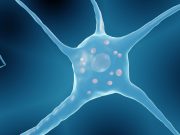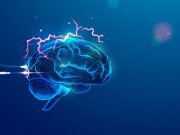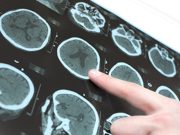Tag: Brain
Cholinesterase Inhibitors Beneficial for Dementia With Lewy Bodies
Use of ChEIs significantly slowed cognitive decline at follow-ups compared with memantine and nonuse
Awareness of Unruptured Aneurysm Diagnosis Increases Risk for Mental Illness
Incidence rate of mental illness higher among those with UIA, especially in younger age groups
Study Detects Cognitive Motor Dissociation in Patients With Disorders of Consciousness
About 25 percent of those without observable response to commands had cognitive motor dissociation
MR-Guided Focused Ultrasound Thalamotomy Beneficial for Essential Tremor
Improvement seen in mean tremor/motor score from 17.4 to 6.4 at three months with use of MR-guided, focused ultrasound thalamotomy
Widespread Brain Structural Alterations Seen in Conduct Disorders
Children with conduct disorders appear to have smaller amygdala, nucleus accumbens, thalamus, and hippocampus volumes
Body Composition Patterns Linked to Risk of Neurodegenerative Diseases
Lower rate of neurodegenerative diseases seen with 'fat-to-lean mass,' 'muscle strength,' 'bone density,' and 'leg-dominant fat distribution' patterns
Parkinsonism Occurs Frequently in Chronic Traumatic Encephalopathy
More severe CTE stage and nigral pathology seen for participants with parkinsonism versus those without parkinsonism
Nightmares in Midlife May Point to Future Cognitive Decline, Dementia
Findings seen in middle-aged and older adults from the general population, free from Parkinson disease
Structure, Function of Brain Connectome Tied to Gray Matter Atrophy in Parkinson Disease
Models including disease exposure indexes predict gray matter atrophy accumulation
Emergence of Psychosis in Alzheimer Disease Linked to Elevations in p-tau181
Increase in plasma p-tau181 levels seen in patients with incident psychosis over follow-up versus those with psychosis at baseline














